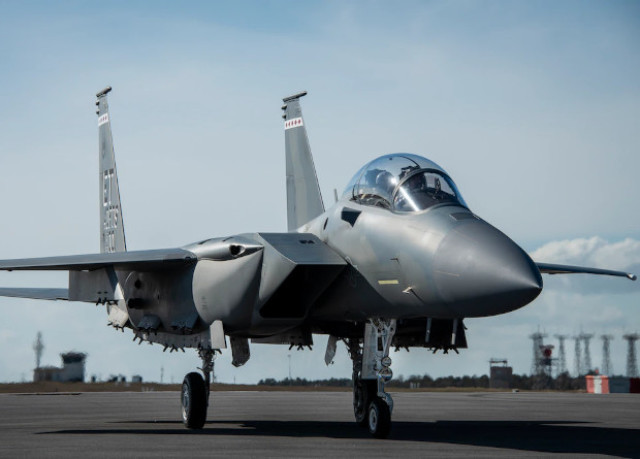The US Air Force has released a request for information on technologies and systems that will create a "smart" electronic warfare system for F-15 Eagle fighters, including the latest modification of the F-15EX Advanced Eagle. According to Flightglobal, the new system will automatically recognize enemy radars and communication devices and select methods to suppress them.
Currently, the F-15 fighters are equipped with the EPAWSS electronic warfare system, developed by the British company BAE Systems. This system uses a database of radio signal sources, thanks to which, for example, it can identify the radars of anti-aircraft missile systems. Depending on the type of radio source identified, EPAWSS automatically uses one of several electronic jamming methods.
At the same time, many companies in the world are developing new radar stations that use new materials in their design and that operate at different frequencies, use a floating frequency or are able to change it when detecting radio interference. Such radars are either not yet listed in the EPAWSS database, or they simply cannot be included in it.
It is assumed that the new electronic warfare system for F-15 fighters will be able to independently analyze radio signals, determine the type of source from them, and, depending on this, select and apply some method of electronic suppression. Details about the prospective system are not disclosed. It is only known that software algorithms for it will be created using neural networks.
At the end of 2018, the US Defense Information Systems Agency began to form a complete library of samples of radio signals transmitted by various US military equipment. The library, called the JSDR, will be available to all types of US troops: the Air Force, Navy, Marine Corps and the US Army.
It is assumed that a promising library of radio signals will solve two problems simultaneously. First, units operating on the same battlefield from different types of troops will be able to identify each other's signals and configure their radio communication systems in such a way as not to cause interference. Secondly, it will become easier to conduct electronic intelligence — having access to the library, specialists will be able to recognize the signals of American military systems on the air.
Vasily Sychev

